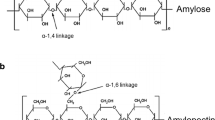Abstract
This investigation evaluated some new (Preflo®) and existing commercially available (Starch 1500, Star Tab) modified starches as direct compression excipients. Preflo® corn starches (CH-10, CH-20, CH-30) and Preflo® potato starches (P-250, PI-10, PJ-20) were evaluated and compared with respect to their pharmaceutical properties such as particle size, density, flowability, friability, and compression properties. Preflo® starches showed a high bulk density and good flowability. Preflo® corn starches and Star Tab formed harder tablets than Preflo® potato starches and Starch 1500. Data from the Athy-Heckel plots indicated that the Preflo® starches are soft materials and, unlike Starch 1500, undergo plastic deformation. Tablets containing acetaminophen were also compressed with the starches and disintegration and dissolution studies were conducted. Starch 1500 tablets disintegrated in 3.5 min, whereas none of the Preflo® starch tablets disintegrated in 30 min. While complete acetaminophen release occurred in 25 min from Starch 1500 tablets, the drug dissolution time from Preflo® starch tablets varied from 4 to 12 hr, indicating a potential use for some of these starches in solid oral modified-release dosage forms.
Similar content being viewed by others
REFERENCES
R. Parvez and S. Bolton. Evaluation of a new fine particulate cellulose as a direct compression tablet aid. Drug Dev. Ind. Pharm. 11:565–583 (1985).
A. M. Guyot-Hermann, D. Leblanc, and M. Dragnet-Brughmans. Gamma sorbitol as a diluent in tablets. Drug Dev. Ind. Pharm. 11:551–564 (1985).
G. K. Bolhuis, G. Reichman, C. F. Lerk, H. V. van Kamp, and K. Zuurman. Evaluation of anhydrous α-lactose, a new excipient in direct compression. Drug Dev. Ind. Pharm. 11:1657–1681 (1985).
O. K. Udeala and A. Chukwu. Tabletting properties of Musol, a new direct compression vehicle. Drug Dev. Ind. Pharm. 12:1587–1612 (1986).
E. Doelker, D. Mordier, H. Iten, and P. Humbert-Droz. Comparative tabletting properties of sixteen microcrystalline celluloses. Drug Dev. Ind. Pharm. 13:1847–1875 (1987).
B. B. Sheth, F. J. Bandelin, and R. F. Shangraw. Compressed Tablets. In H. A. Lieberman and L. Lachman (eds.), Pharmaceutical Dosage Form: Tablets, Vol. 1, Marcel Dekker, Inc., New York (1980) pp. 147–148.
J. N. Staniforth. Relationship between particle packing and the physical stability of powder mixes. J. Pharm. Pharmacol. 37:692–697 (1985).
A. Martin, J. Swarbrick, and A. Cammarata. Physical Pharmacy, 3rd edition, Lea and Febiger, Philadelphia, 1983, pp. 513–514.
D. A. Wadke and H. Jacobson. Preformulation testing. In H. A. Lieberman and L. Lachman (eds.), Pharmaceutical Dosage Form: Tablets, Vol. 1, Marcel Dekker, New York, 1980, pp. 44-46.
A. R. Fassihi and I. Kanfer. Effect of compressibility and powder flow properties on tablet weight variation. Drug Dev. Ind. Pharm. 12:1947–1966 (1986).
H. Leuenberger and B. D. Rohera. Fundamentals of powder compression. I. The compactibility and compressibility of pharmaceutical powders. Pharm. Res. 3:65–74 (1986).
A. M. Salpekar and L. L. Augsburger. Magnesium lauryl sulfate in tableting: Effect on ejection force and compressibility. J. Pharm. Sci. 63:289–293 (1974).
A. F. Asker, K. M. Saied, and M. M. Abdel-Khalek. Investigation of some materials as dry binders for direct compression in tablet manufacture. Pharmazie, 30:373–376 (1975).
R. L. Carr. Evaluating flow properties of solids. Chem. Eng. 72:163–168 (1965).
E. L. Parrott. Pharmaceutical Technology, Burgess, Minneapolis, 1970, p. 18.
J. I. Wells. Pharmaceutical Preformulation: The Physicochemical Properties of Drug Substances, Ellis Horwood, Chichester, England, 1988, p. 210.
J. E. Rees and P. J. Rue. Time-dependent deformation of some direct compression excipients. J. Pharm. Pharmacol. 30:601–607 (1978).
R. F. Shangraw. Compressed tablets by direct compression. In H. A. Lieberman, L. Lachman, and J. B. Schwartz (eds.), Pharmaceutical Dosage Form: Tablets, Vol. 1, 2nd ed., Marcel Dekker, New York, 1989, pp. 209–210.
R. W. Heckel. Density-pressure relationships in powder compaction. Trans. Metall. Soc. AIME 221:671–675 (1961).
R. W. Heckel. An analysis of powder compaction phenomena. Trans. Metall. Soc. AIME 221:1001–1008 (1961).
Z. T. Chowhan and Y. P. Chow. Compression properties of granulations made with binders containing different moisture contents. J. Pharm. Sci. 70:1134–1139 (1981).
Author information
Authors and Affiliations
Rights and permissions
About this article
Cite this article
Sanghvi, P.P., Collins, C.C. & Shukla, A.J. Evaluation of Preflo® Modified Starches as New Direct Compression Excipients. I. Tabletting Characteristics. Pharm Res 10, 1597–1603 (1993). https://doi.org/10.1023/A:1018968502586
Issue Date:
DOI: https://doi.org/10.1023/A:1018968502586




